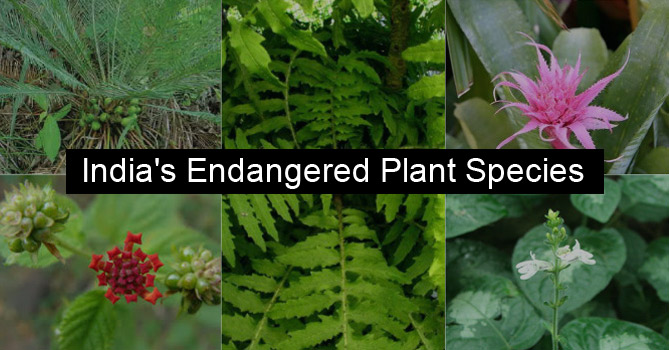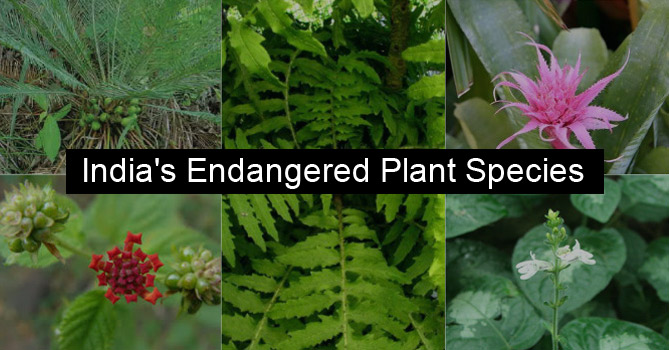The Glorious Legacy
India, the home of Ayurveda was once considered the epicentre of herbal bounty. According to legends, it grew the Sanjivani – the herb that could cure all ailments and counter all poisons. Traditionally, India’s flora has been one of the richest across the globe. This can be attributed to the sheer range of soil, climatic conditions, topography and ecology present in the nation. According to studies, over 49,000 species of plants are to be found in the nation, that is, about 12 percent of the total plant varieties known to mankind today. This includes some 16,000 species of flowering plants. This accounts for about 6 to 7 percent of the total flowering plant species found in the world. Among all the plants found in India, scientific studies and research prove that about 3,000 plant species possess medicinal qualities and have been used in traditional remedies.
In Grave Peril
Sadly, India is no longer the paradise where thousands of species of flora and fauna flourished. According to botanists and researchers, at least about 20 percent of the various plant species found in India are categorised as either threatened or endangered. We are in grave peril of losing these plants and their benefits forever. Near about 28 percent of plants found in India are endemic to the country. This means that if these plants are not protected and preserved by our own efforts, they will go permanently out of existence from the world.
The main causes for the plants being in such grave peril is the destruction of their natural habitats and ideal growing conditions which is happening due to increased urbanisation. Pollution of soil, air, water besides unrestrained use of chemical fertilizers, use of plastics and increase in the number of industries are damaging the natural requisites for the growth of these plant varieties. India is divided into eight different regions on the basis of the available soil, climate and flora types. These regions are: the Eastern Himalayas, the Western Himalayas, Assam, the Indus plain, the Gangetic plain, the Deccan (including the Eastern and Western Ghats), Malabar region and the Andaman Islands. Each of these face their own set of environmental challenges.
The Red List
The International Union for Conservation of Nature (IUCN) comes up with a Red List from time to time. The list specifies the species of plants and animals that are threatened or are endangered in various parts of the world. The number of Indian plants and animals in the IUCN Red List has been steadily on the rise. In 2008, the Red List featured some 246 species of plants while in 2013 and 2014, this number went up to 325 and 332 respectively. In 2012, the Red List noted that some 62 species of plants in the country were Critically Endangered, that is, in immediate danger of going extinct. Not only are the plants in our country endangered and threatened but a number of animals, insects and reptiles also face extinction. According to a World Bank report of endangered mammals, India is said to have the fourth largest number of threatened mammals species in the world.
Here are some of the well-known endangered species of plants in India that are in urgent need of conservation:
- Amentotaxus assamica (Assam catkin yew) – Arunachal Pradesh
Coniferous trees found only in the Delei Valley and Turoo Hills of Arunachal Pradesh. Low rates of reproduction have endangered the plant species.
- Ilex khasiana – Shillong (Meghalaya)
Shrubs found only in Shillong Peak in Meghalaya. Only about three to four plants remaining.
- Diospyros celibica (Ebony) – Karnataka
Well-known for its dark and high quality wood. Highly sought-after for furniture and woodwork. Indiscriminate cutting has depleted the region covered by these trees.
- Pterocarpus Santalinus (Red Sandalwood) – Eastern Ghats
This is a rare form of sandalwood found only in southeastern India. Well-known for its medicinal properties. Endangered due to logging and loss of habitat.
- Chlorophytum tuberosum (Musli) – Tamil Nadu
A flowering plant found only in the interiors of Africa and India. It is a well-known Ayurvedic medicine that gives vitality and strength. Indiscriminate harvesting has endangered the plant.
- Kingiodendron Pinnatum (Malabar Mahagony) – Kerala, Karnataka, Tamil Nadu
Another tree best known for its wood. Logging, exploitation and destruction of habitat have led to low reproduction.
- Actinodaphne lawsoni – Kerala
A canopy or sub-canopy tree that grows in high altitude forests. Harvested extensively for its medicinal properties. It is endemic and endangered due to habitat loss.
Read More:
Endangered Animal Species of India





